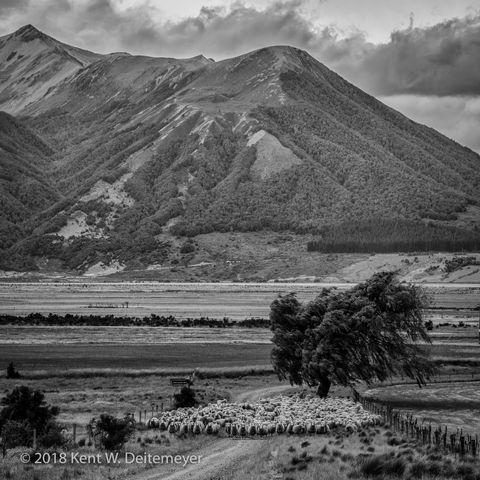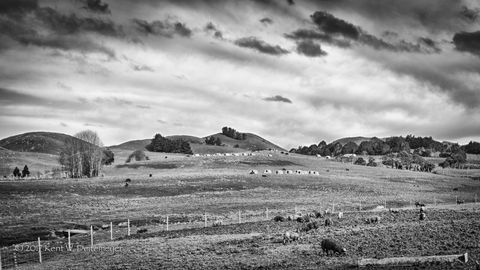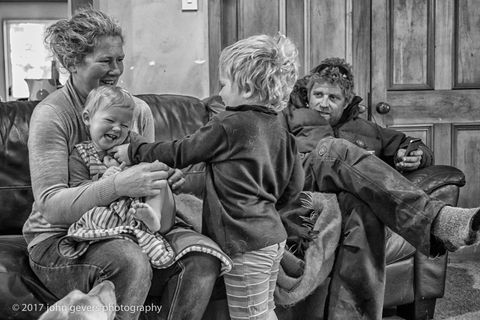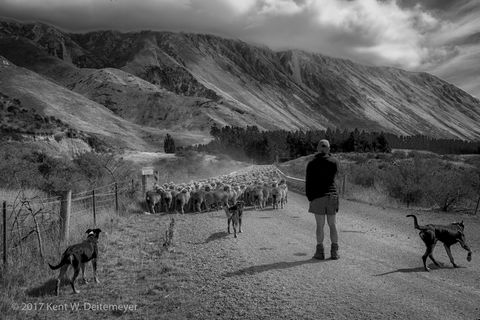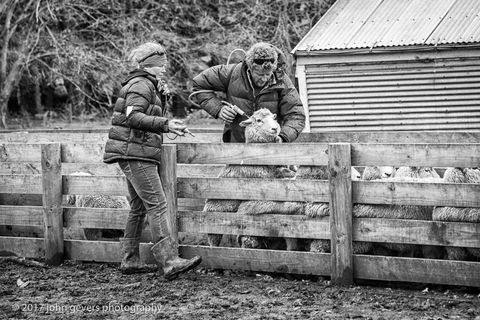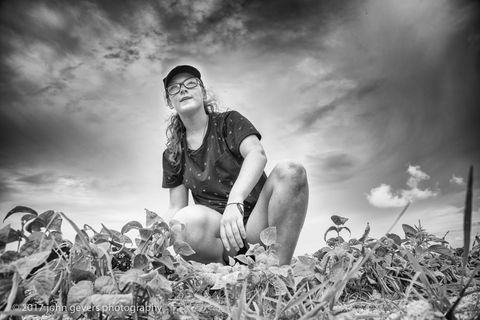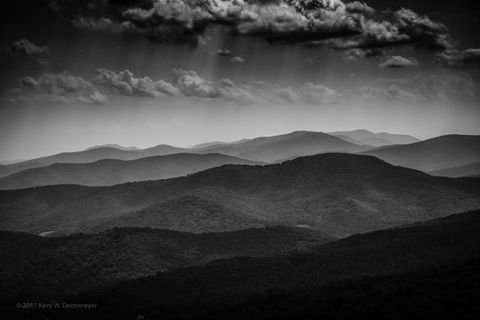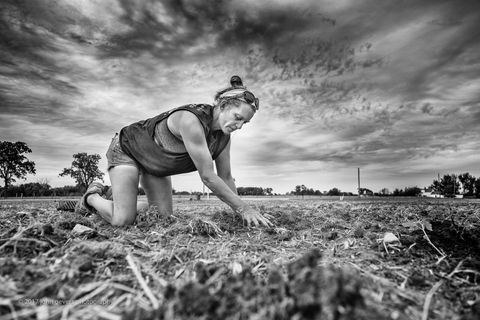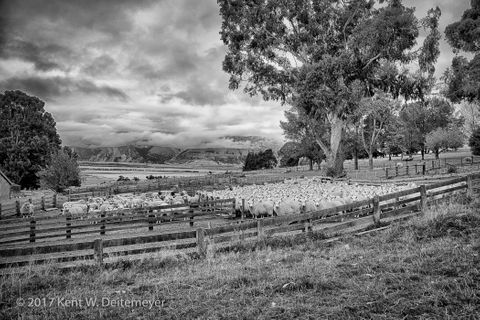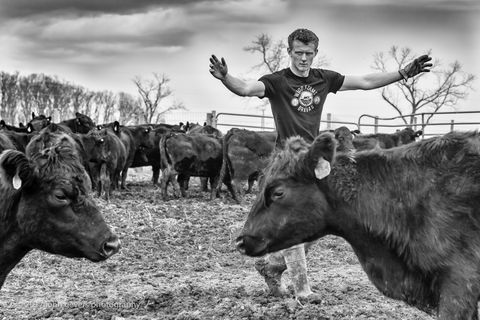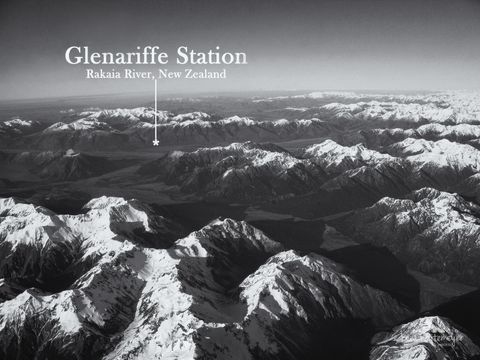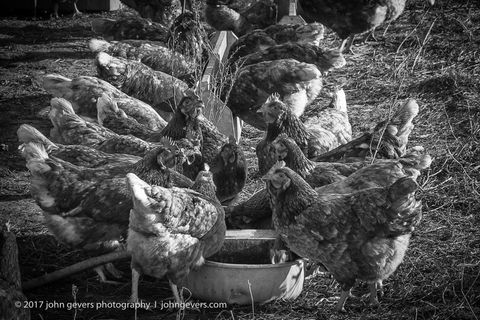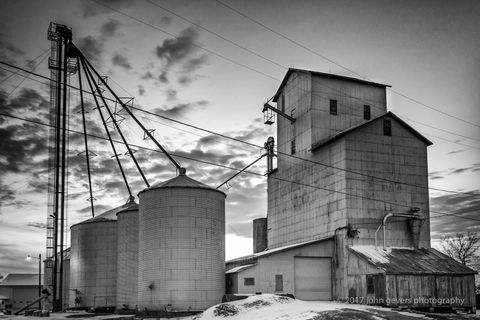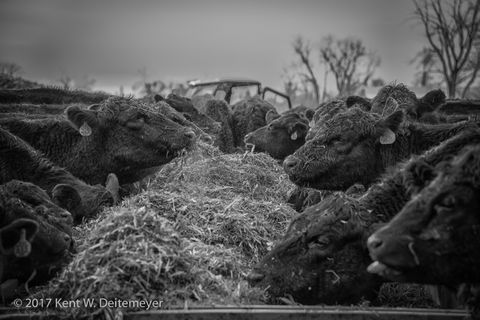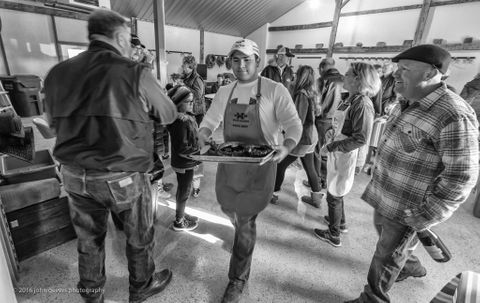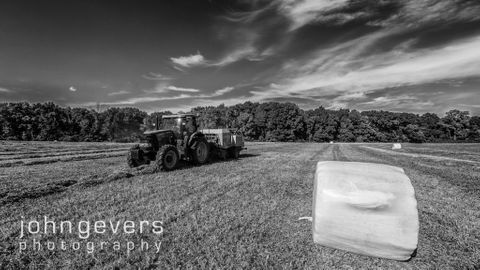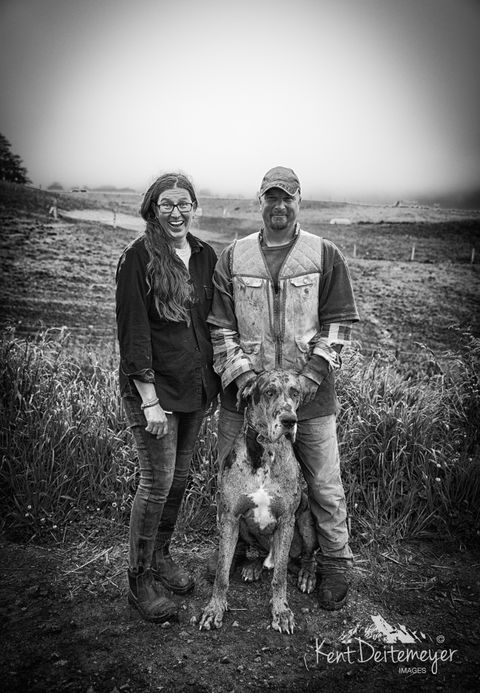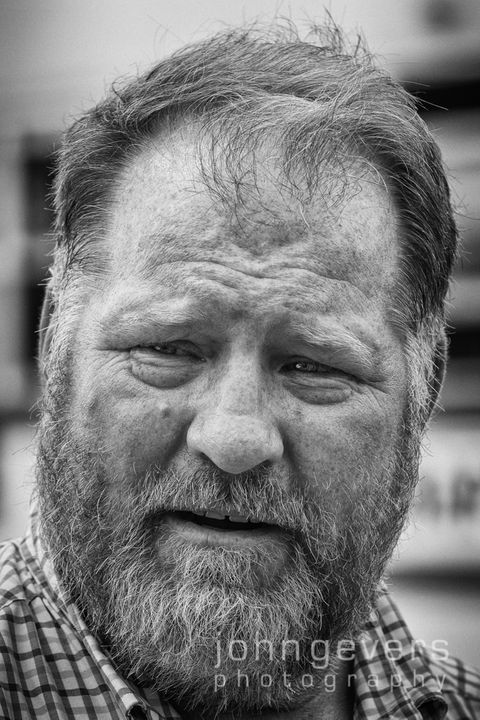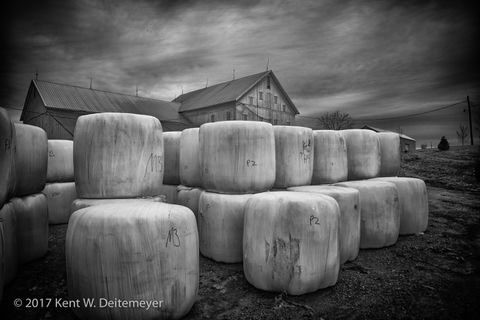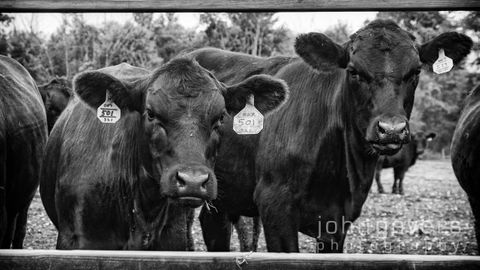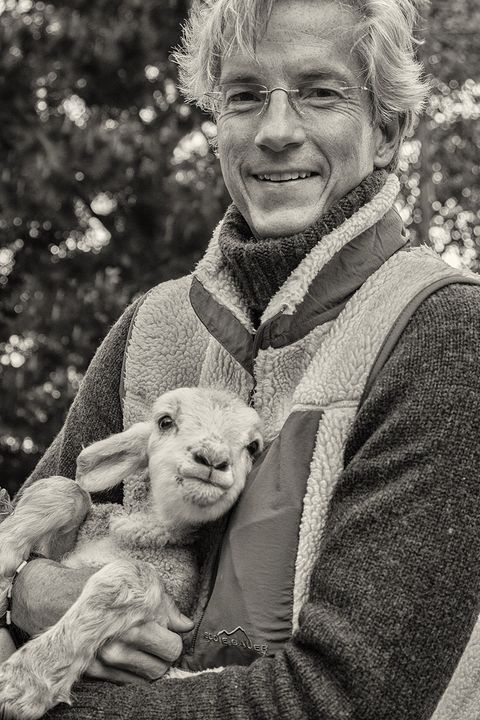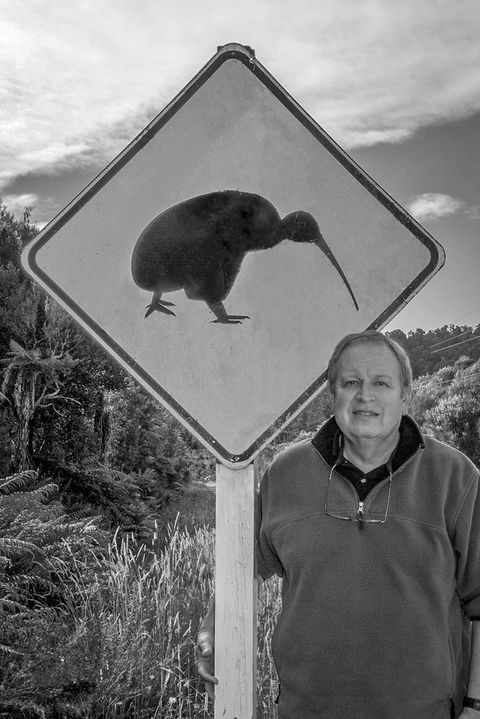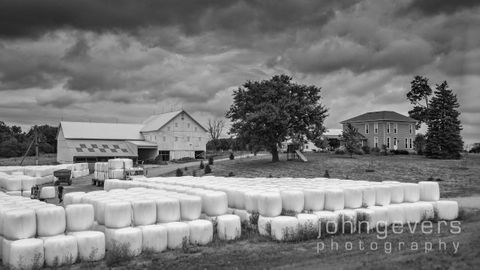SOTH
A photographic chronicle of life on the family farm from the heartlands of America and New Zealand
High Country Summer in the Southern Alps at Glenariffe Station
Kent Deitemeyer
With the arrival of summer in the Southern Alps and the grazing paddocks greening, it is time to move in livestock on to the new grass. It turned out to be one of those days of windy, cold mountain weather despite it being summer. But the paddocks were in great shape as there had been nurturing rain. In December 2017, Mark Ensor of Glenariffe was busy moving cattle and sheep to fresh paddocks and sending a truck load of ewes off to be sold at the livestock market as breeding ewes. It was a busy day but wee Ben was there to help Dad (and do some posing for the photographer!).
moreLongbush Free Range Pork — New Zealand's springtime brings operational changes
Kent Deitemeyer
The arrival of spring brings new changes to the farm's operations with new marketing and distribution arrangements and a significant increase in herd size and added genetics — all with a continued focus on best practices with the farm's husbandry and welfare policies. Above is a view of the Longbush's expansion into rejuvenated old sheep paddocks to offer plentiful free range grazing for the Longbush pig herd.
moreGlenariffe Station • High Country Community
John Gevers and Kent W. Deitemeyer
Redcliffs Station • Early Spring Projects, Fine Merino Wool and Grass-Fed Angus Beef
Kent W. Deitemeyer
Several years ago, Kent had the good fortune of driving up Double Hill Road in the Rakaia River Gorge and meeting Willy Ensor of Redcliffs Station as he was moving his Merino flocks down the road across the one-way Redcliffs Bridge. Kent ended up making some photographs of Willy as they worked the sheep in the yards near the wool shed.
So, a few years later Kent and John are putting together the Stewards of the Heartlands project in New Zealand starting with Glenariffe Station in the Rakaia Gorge with Mark Ensor and BJ Bull. Mark was keen that our sustainable family farming project capture the tight-knit farming community in the gorge valley.
moreGlenariffe Station • "We best get to the drenching before we get wet."
John Gevers & Kent Deitemeyer
Hoosier farm-to-table in fewer than 24 hours, 8 miles
John Gevers
“Do you know what embouchure means?” she asks, crouched on the earth, picking a green bean with one hand while deftly casting another one into a basket.
“It’s the shape you have to make with your mouth when playing a woodwind,” Elizabeth Wood says matter-of-factly while pinching and adding another bean to her collection basket. Dennis and Kristen Wood’s 13-year-old daughter has just finished three weeks of nine-hour-a-day band camp and music is on her mind even while harvesting from her family’s Wood Farms’ organic produce garden.
moreSoil, Spirit, Sweat: Keys to Sustainable Family Farming
Kent W Deitemeyer and John Gevers
Smith Meadows • Shenandoah Valley • Berryville, Virginia
“Land, then, is not merely soil; it is a fountain of energy flowing through a circuit of soils, plants, and animals.” — Aldo Leopold, A Sand County Almanac, 1949
In the sweltering Virginia days of July, John and Kent met up in Virginia’s beautiful Shenandoah Valley and the Blue Ridge Mountains with a modern Aldo Leopold, Forrest Pritchard. We visited his farm, Smith Meadows, to experience firsthand his principles of husbandry and agricultural ethics in our quest to chronicle sustainable family farming.
Forrest is a noted author and lecturer on ethical, sustainable farming who practices what he preaches. His book, Gaining Ground: A Story of Farmers’ Markets, Local Food and Saving the Family Farm is a New York Times best seller. His second book, Growing Tomorrow: A Farm-to-Table Journey in Photos and Recipes garners five-star praises from editorial reviewers as “a down-to-earth look at how sustainable farming is changing the way we eat.” Forrest has become a leading light in the United States in the sustainable family farming movement and has proven how one can renovate a struggling farm, transforming it into a productive operation that produces healthy food for the local community.
moreBest Laid Plans of Mice and (Wo)men
John Gevers
(The story in this dispatch from Wood Farms in Indiana is interspersed with photographs, captions for which appear by moving your cursor or finger over each one.)
Twenty-seventeen is the year Wood Farms experiments with adding organically grown produce to its already ambitious production cycles of growing organic hay and raising antibiotic-free, non-GMO Angus cattle.
Farmhand Cathy Bartz began the produce endeavor last winter by researching what it takes to garden organically on a large scale. You don’t have a real sense of how large an acre is until you stand at a corner of a freshly tilled, blank acre of soil and contemplate hand planting it. And watering it. And weeding it. And harvesting from it. All of which pretty much means being bent at the waist or crouching on the ground for long periods of time.
But since much of what Wood Farms grows this first year is earmarked for use at BRAVAS restaurant and its food trucks, a full acre of the good stuff makes sense.
moreAn Eclectic Day at Glenariffe Station for Counting Fish and Pastoral Management
Kent W Deitemeyer
Monday, 10 April 2017 turned out to be the usual magic day in the High Country at Glenariffe Station with a bluebird day in the forecast. A note from BJ and Mark the night before alerted me to the news that the Fish & Game folks were headed up the Rakaia River on Monday morning by helicopter to do a salmon count in Glenariffe's salmon spawning streams. That was enough to get me to bunk work, load up the car with camera gear and head up the Rakaia River Gorge. An added plus was the perfect weather was going to allow Mark to finish up his pasture management chores to drill grass seed and prepare another paddock with a controlled 'burn-off' so it can be re-seeded before Winter arrives in the coming months.
It was not long before I left the morning traffic of Christchurch behind in the dust and headed across the Canterbury Plains and back up the Rakaia Gorge into the heart of the Southern Alps to Glenariffe Station. It is a stunning trip in any weather. We have had some heavy rains in the previous week but the water fords were okay as water levels had dropped.
Every trip up the Gorge is different. On the way up, I encountered Glenariffe's neighbouring station moving their sheep mob up the road. I had a chance to chat to Chantelle Fisher who was driving the mob and she kindly honoured me with a wee portrait with her with her two working dogs while we waited for the mob to move on up the road. Chantelle was aware of our project and thought it was time to get some horse images as she is a horsewomen and friend of BJ's. So, I have marked that down on my "to do" list. I will look forward to this as I enjoy photographing horses in work and have done a bit photographing harness racing. (One minor claim I have was the opportunity to photograph actor Val Kilmer's horses on his ranch in New Mexico!). There is nothing like capturing the image of a horse in a full run.
moreFarmer and bestselling author Forrest Pritchard visits the Heartland
John Gevers along with Stewards consultant, Janet Katz
This week, sustainable farmer and New York Times bestselling author, Forrest Pritchard, visited Fort Wayne, Indiana, the home of Wood Farms that we chronicle here on Stewards of the Heartlands. Forrest was kind enough to sit down for an interview with us, and his audio responses to our questions are at the bottom of this post. Our thanks to Michelle Merritt for scheduling our time with him.
Mr. Pritchard was in Fort Wayne to be the speaker at the city’s first “Farm-to-Table Taste” event hosted by the Allen County Public Library. The event, which sold out in 15 hours of being announced, featured tastes from local farm-to-table restaurants Tolon and Junk Ditch, the Fort Wayne Farmers Market and its vendors, the 3 Rivers Natural Grocery Food Co-op, and the Little Turtle Branch Seed Library. Jeff and Zach of Hawkins Family Farm in North Manchester were also on hand.
Forrest Pritchard has written two books: “Gaining Ground” weaves a compelling story of how he took his struggling eight-generation farm in Virginia to a sustainable farming success while giving insights into his family’s life and the dedication it has taken from all involved. In “Growing Tomorrow” Forrest and photographer Molly Peterson offer an intriguing, behind-the-scenes look at 18 sustainable farmers scattered throughout the U.S.
moreSheep Shearing Day at Glenariffe Station
Kent W Deitemeyer
It is the early days of autumn in New Zealand and shearing day for 5000 Romney sheep at Glenariffe Station. When I arrived, BJ was busy doing the cooking in the kitchen and looking after their 10 month old daughter. BJ was keeping the shearing crew well fed with three meals and two tea breaks each day. Mark was kept busy with the dogs to keep the sheep moving into and out of the sheep yards so there is no hold up. And #1 son, Ben, was outside playing and looking after the working dogs with a bit of TLC when they were having their own break.
The shearing crew was down to their last day. The sheep yards were a busy place with sheep to be sheared and moved into the shearing shed. The sheared sheep are moved into holding pens to be released together and set off to the paddocks. In addition to the five shearers are three crew members that looked after moving the sheared wool off to the presser where the large wool bales are pressed and wrapped up.
The shearing crew works four two-hour shifts with a half-hour break between shifts. It is tough back-breaking work and the pace is next to a frenzy to get the job done. Imagine shearing 5000 critters!
Wool bales were pressed and packed up to be sent off from the loading dock to be sold at auction. Each bale weighs approximately 175 kgs and is labeled with the Glenariffe Station name. Romney wool is used in making carpets and of course is 100% New Zealand raised and being a completely natural and renewable resource.
morePreg Check at Wood Farms
John Gevers
Late winter brings a scheduled pregnancy check among the cows at Wood Farms, Fort Wayne, Indiana. A breeding schedule is maintained to produce calves three times a year. This time, 60 eligible female cattle were tested for pregnancy, and 52 are carrying. That's an 87% pregnancy rate and one that makes farmers Dennis and Kristen Wood happy. They aim for 90% each time. Of this number, 42 out of 46 cows are carrying, and 10 out of 14 heifers are.
When a cow or heifer is not pregnant, it's referred to as being "open." During this check, one fraternal female twin was tested, and in keeping with genetics, she is not fertile and forever open. The term for this condition is called "freemartinism," and a "freemartin" is a sterile female calf that is the twin of a male calf whose hormones affected its development.
The veterinarian hired by the Woods is Dr. Cody Anspach from the Decatur Veterinarian Hospital. A recent graduate of Purdue University, Dr. Anspach uses an ultrasound device with a transducer that he inserts in each female to detect pregnancy and whether the calf(ves) will be delivered in May or September. The images from the transducer are conveyed to the goggles he wears on his head.
moreThe Importance of 'Place' - Glenariffe Station and High Country Sheep Farming in the Southern Alps of New Zealand
Kent Deitemeyer
Photographing Glenariffe Station is firstly all about capturing a sense of 'place' where location, history, legacies, community and family resound together with a beautiful story. Some 40 kilometres from the nearest highway lies Glenariffe Station, a New Zealand high country sheep farm in the Southern Alps of the South Island. Glenariffe Station is a 100-year old family farm owned by Mark Ensor and BJ (Belinda) Bull located in the far reaches of the isolated Rakaia River valley in the vastness of a wide valley surrounded by mountain peaks. Such isolation belies the close knit farming community of the families in Rakaia River gorge that have helped each other for over a century since the pioneering days of colonial New Zealand to today's iconic Kiwi farmily farm. A beautiful story to be told as the months and years go by of family farming in the Southern Alps. This aerial view was made from a flight over the Southern Alps points the location of Glenariffe Station tucked up on the river terrace in the Upper Rakaia River Valley. The braided river valley in the foreground is the Wilberforce River and to the left is Lake Coleridge. In the far distance on the left is the Canterbury Plains and the Pacific Ocean. Just out of the image on the far right would be Mt Cook, New Zealand's highest mountain where Sir Edmund Hillary 'warmed-up' on its icy glaciers before conquering Mt Everest.
moreHeart Outside the Heartland: Walpole Valley Farms
John Gevers
Although not located in the Heartland of America, Walpole Valley Farms in New Hampshire is a family farm with a lot of heart. Last fall, we spent a bit of time with the Caserta family whose three generations — along with dedicated farm hands, practice sustainable, humane farming. Raising grass-fed beef, slow-growing pasture-raised chickens, heritage turkeys, grass-fed lamb and pasture-raised pork, Walpole Valley Farms provides customers in the area with delicious local meats and eggs. They use only certified non-GMO grain that leads to a healthy, nutritious product for local families who stop by and shop in a small store right on the farm.
As more and more family farms are beginning to offer, this 105-acre organic farm also has a tourism side to help maintain sustainability. The Inn at Valley Farms, on the grounds of the farm, dates to 1774 and is a graciously restored colonial home offering deluxe bed & breakfast accommodations and three-course candlelit farm-to-table breakfasts. The Inn and nearby restored barn cater to unique destination weddings and corporate functions. A special feature of staying at the Inn is that you are entitled to follow, and even help with if you desire, the daily farm chores. Something we couldn't pass up.
moreDennis Wood presents at the OEFFA Conference 2017 in Dayton
John Gevers
Early Friday morning before dawn, in brisk February air on the Wood Farm in Fort Wayne, Indiana, farmhands Dom and Jack arrived at the farm for their workday: first to deliver a load of organic hay to a customer and then returning to attend to chores on the farm.
At the same early hour, Dennis Wood, farmhand Cathy Bartz, and fellow farmer from down the road at Dick's Organics, Rick Ritter, climbed into a farm pickup truck and turned the wheel toward Dayton, Ohio. It was the weekend for the Ohio Ecological Food and Farm Association (OEFFA) Conference, and Dennis Wood of Wood Farms was asked to present a workshop at the enormous event in Dayton's conference center for the second year running. His presentation to a capacity crowd was entitled, "Marketing Farm-to-Table Beef," something Wood Farms knows a thing or two about.
In addition to Dennis' humoring and educating during his presentation about the challenges and successes of marketing beef, he also explained how the farm's beef production complements his organic hay operation. The Wood Farms contingent also hit the floor of the large organic farming trade show, and took in other workshop presentations, including one in which Chef Steven Williams, a James Beard chef, of Bouquet Restaurant in Covington, Kentucky, spoke. Chef Williams shed light on what he and other chefs of Farm-to-Table restaurants look for when buying directly from farmers.
moreWood Farms Angus beef now also available in Steak Sammie just 8 miles from farm
John Gevers
A Wood Farms Steak Sammie joins the menu at Bravas on Fairfield in Fort Wayne, Indiana. Restaurant owner Bo Gonzalez already sourced his hamburger meat from Wood Farms' non-GMO, antibiotic-free Angus beef, and now he offers more of the locally-sourced goodness in a 4-ounce tender steak cut in the sandwich that includes Horsey Sauce, Bravas Steak Sauce, and is topped with crispy fried onions. Gluten free buns are also always an option at Bravas. Only 8 miles separate this Farm from its Table. Eat 'em up!
moreBravas burgers from Wood Farms beef
Kent Deitemeyer and John Gevers
This morning at Bravas Burgers, we photographed the preparation of Wood Farms fresh, non-GMO, antibiotic-free Angus beef for the day's customers.
Bravas Burgers of Fort Wayne, Indiana, was keen to source fresh, non-GMO, antibiotic-free beef that is sourced from local ethical farms that produce sustainable high-quality beef that is well-marbled and flavorsome. They looked no further than a local Fort Wayne beef producer, Wood Farms, that breeds and raises high-quality Angus beef from its family farm based on principles of ethical animal welfare and care for the individual animal. Wood Farms embraces the terms of the Ancient Contract based on the simple principle that "as we take care of our animals, they take care of us."
Moreover, Wood Farms has endeavored over many years to select their Angus genetics for meat quality to meet the discerning requirements of chefs and consumers of beef products.
As stewards of the American heartland, it is this combination of ethical animal agriculture, combined directly with the restaurateurs and consumers, that supports the local rural community and provides high quality, nutritious beef sourced from a local farm that practices the highest levels of animal care and stockmanship.
moreFeeding time at Wood Farms
Kent Deitemeyer and John Gevers
Kent joined John in Fort Wayne, Indiana, the week of January 8, 2017, to photograph at Wood Farms. Farm work included photographing farm staff feeding the cattle and preparing bedding for the cows, steers and calves on a cold winter day at Wood Farms.
The images below testify to the hardiness of farmers who must work in all conditions, including bitter cold, snow, ice, mud, and you name it.
moreNew Year's Day farm breakfast at Wood Farms
John Gevers
Wood Farms in Fort Wayne, Indiana, hosted a New Year's Day Farm Breakfast to, in the words of farmers Dennis and Kristen Wood, "Celebrate the achievements of the Farm's past year, to embrace the opportunities of the upcoming year, and to express gratitude to everyone who has supported us to this point: our customers, employees, landowners, suppliers, friends and neighbors."
Below is a gallery of images from the event on January 1, 2017. Hovering your cursor or finger over images displays captions.
moreLate fall hay raking and baling on Wood Farms
John Gevers
It was the last harvest of organic hay at Wood Farms in Fort Wayne, Indiana, in middle September. Some fields had produced four harvests during the calendar year. Farm employee Jon Knapke first traced the cut fields with a circular tined hay rake on the back of the tractor, lining the recently cut grasses in neat rows. Then Dennis Wood worked the baler behind another tractor to pick up, bale, and package the hay.
Scroll down for a gallery of images from the process.
more
A Rare Breed and Husbandry on the Range
Kent Deitemeyer
Dr Naya Brangeberg and Jeremy Wilhem • Longbush Free Range Pork Farm • Longbush, Wairarapa, New Zealand
scroll down for story and gallery of images (hovering cursor or finger over images displays captions)
moreWood Farms Tour
John Gevers
Wood Farms in Fort Wayne, Indiana, offered a tour of its operations in cooperation with the Ohio Ecological Food and Farm Association (OEFFA). The Association works to promote sustainable, local, and organic agriculture that builds strong rural communities, safe and healthy food systems, and preserves Ohio’s natural environment.
Wood Farms, owned and operated by Dennis and Kristen Wood and their children and staff, is a certified organic 500 acre hay and pasture farm in Northeast Indiana that supplies hay to regional dairies and beef to local restaurants. They also raise organic corn, organic wheat, and produce and keep bees. Visitors toured the farm’s rotational pastures, Angus herd, and haying equipment, and learned the techniques and systems the Wood family uses to manage each segment of the operation. They have partnered with other landowners in the area, including the Fort Wayne airport, to increase their base acreage. Food vendor and customer of Wood Farms beef, Bravas Specialty Burgers, was on-site to satisfy the hungry farm guests.
Scroll down for gallery of images. Hovering cursor or finger over photographs displays captions.
moreFarms chronicled in Stewards of the Heartlands
Our diverse farms in each of the Heartlands: New Zealand and the USA. We will bring you their stories of successes and challenges through several years and through all seasons.
moreProject consultants for Stewards of the Heartlands
John Gevers & Kent Deitemeyer
We are grateful to have the following offering guidance and expertise as we document Stewards of the Heartlands:
- Carlan Tapp • Santa Fe, New Mexico
www.carlantapp.com • www.questionofpower.org/pages/stories.html
- Janet Katz, M.S. in Sustainable Food Systems, Green Mountain College, Vermont
Fort Wayne, Indiana • Producer & Director, From Fencerows to Foodsheds
- Bernard E. Rollin, Ph.D., Columbia University, New York • Colorado State University Distinguished Professor of Philosophy, Animal Sciences, & Biomedical Sciences; University Bioethicist • http://philosophy.colostate.edu/people/brollin/
About photographer John Gevers • Fort Wayne, Indiana, U.S.A.
John’s fondest boyhood memories are of weekend visits to his cousins’ farm in northern Indiana not far from his home in Fort Wayne. He had his first crush on Kodachrome film. And he came of age in New Zealand, taking a hottie* to bed with him after long days working on farms.
(*hot water bottle)
John began writing stories and making photographs as a boy, worked his way up to editor of the high school newspaper, and went on to hone his skills for the professional world at the Ernie Pyle School of Journalism at Indiana University where he double-majored, adding psychology to his degree. While there, he learned the photojournalistic art of capturing the moment with emotion and beauty from the preeminent photographer, John Ahlhauser, and the art of accurate, story-enhancing editing from The Saturday Review’s Richard Tobin.
As a university junior at the age of 21, he was the youngest American chosen to serve as an Ambassador to New Zealand through Rotary International. In that role, he took New Zealand Studies courses at the University of Otago in Dunedin and travelled the country speaking to any group or individual who would listen. As an Ambassador of Goodwill from the U.S.A., he was sent on a mission Down Under to help counter anti-American attitudes caused by the 1986 suspension of the ANZUS Alliance over nuclear issues. While in New Zealand, his early memories and love of farm life were rekindled as he worked on Kiwi family farms whenever he could and gained experience on sheep, goat, dairy, and deer farms.
moreAbout photographer Kent Deitemeyer • Christchurch, New Zealand
“For most of its history, agriculture has been based on concepts of husbandry and sustainability, care, symbiosis and balance. The metaphor for the traditional animal agriculturalist is the shepherd of the 23rd Psalm, who assures agricultural success by putting his animals into optimal conditions to suit their nature (‘green pastures’) and who augments their natural ability to survive and thrive by providing food, shelter, medical care and protection from predation. Animal productivity was assured by animal health and welfare and vice versa under the rules of the‘ Ancient Contract’ in which man takes care of animals and, in return, animals take care of man.”
From Intuitive Immunology for Veterinarians, by Kent Deitemeyer & Bernard Rollin
Kent has agriculture, photography, and wildlife conservation coursing through his veins and in his daily life. He is a native-born Nebraskan, grew up in Colorado and is a dual citizen of the U.S.A. and New Zealand.
He put himself through university by working on a Northern Colorado purebred cattle ranch and wheat farm. He earned a Bachelor of Science degree from Colorado State University in animal science in 1970. After a five-year career as a bovine reproductive physiologist specialist in Colorado, he broadened his horizons with a Masters in International Management from Thunderbird School of Global Management in Arizona and completed a Masters of Applied Science with Distinction in veterinary immunology from Lincoln University, New Zealand.
moreStewards of the Heartlands: An Overview
John Gevers & Kent Deitemeyer
This photographic chronicle focuses on today’s farming families in two countries hemispheres apart, the U.S.A. and New Zealand. Over the years, both countries have depended on family farms to feed their people and grow commodities for export to support strong economies.
In more recent years, however, the agrarian culture in both countries has faced significant changes. Many family farms that traditionally produce a variety of crops or animals, or both, struggle to remain viable and are forced to increase the scale of their operations to compete with large-scale, single commodity farming operations or face going out of business. As smaller, diversified family farms that used to be spread throughout each country’s Heartland disappear, many rural communities suffer and residents, despite living close to fertile land, must import food from long distances.
In both New Zealand and the U.S.A., the growth of large-scale commodity farms is raising concerns. The sustainability of family farms and rural economies is threatened when agricultural practices are based primarily on maximizing the production of a commodity in the short-term and when agricultural decisions are made by people without a direct connection to the land and values of the local community. In addition to threatening the future of family farms in both countries, large-scale farming operations are raising other serious issues, including the depletion of aquifers, the loss of fertile topsoil, the pollution of water supplies, the unethical treatment of livestock, the decline of biodiversity, and the decline in native flora and fauna.
more